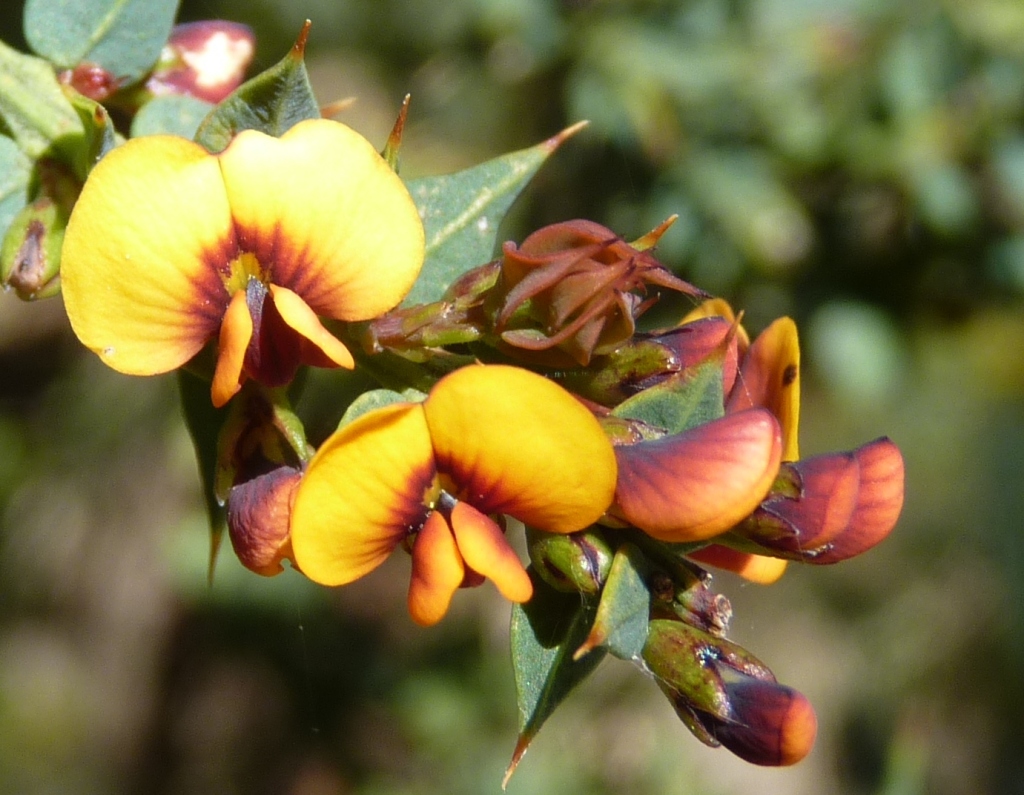Daviesia ulicifolia
Andrews Gorse Bitter-peaRigid shrub to 2 m tall; branches glabrous to hispid; branchlets terete, ribbed, divaricate, spinescent. Phyllodes subulate, narrow-elliptic or narrow-ovate, rarely ovate, 5–35 mm long, 0.5–6 mm wide, flat or convex above, green, glabrous or stiffly pubescent, apex acute or acuminate, pungent, cuspidate, base tapered to rounded; midrib prominent on upper surface; venation obscure. Inflorescences 1–2 per axil, umbelliform, 2–5-flowered, often reduced to a single flower; peduncle 0.5–2 mm long; pedicels 1–1.5 mm long, subtended by several oblong, hooded bracts c. 1 mm long. Calyx 2.5–3.5 mm long including 0.5–0.8 mm receptacle, teeth equal, acute, margins fimbriate; corolla mostly orange-yellow; standard transverse-elliptic, c. 6 mm long, c. 5 mm wide, broadly yellow-brown with a dark reddish-brown centre. Pod obliquely triangular, 5–12 mm long, 3.5–6 mm wide; seed 1, reniform, to c. 4 mm long, mottled.
LoM, MuM, Wim, GleP, VVP, VRiv, MuF, GipP, OtP, WaP, Gold, CVU, GGr, DunT, NIS, EGL, EGU, WPro, HSF, HNF, OtR, Strz, MonT, HFE, VAlp.
An extraordinarily variable species particularly in terms of indumentum and phyllode size and shape. Six subspecies are recognised, two in Victoria. A solitary specimen from near Avoca has been determined as Daviesia ulicifolia subsp. aridicola, but the large distance from its nearest occurrence in mallee dune country in south-western New South Wales, suggests a likely misdetermination. It differs from D. ulicifolia subsp. ulicifolia primarily in its glaucous foliage.
Jeanes, J.A. (1996). Fabaceae. In: Walsh, N.G.; Entwisle, T.J., Flora of Victoria Vol. 3, Dicotyledons Winteraceae to Myrtaceae, pp. 663–829. Inkata Press, Melbourne.
 Spinning
Spinning


